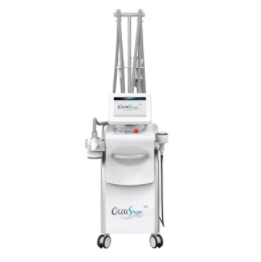How to use RF Slimming Machine ?
Radiofrequency (RF) slimming machines have become popular tools in the realm of non-invasive body contouring. Utilizing advanced RF technology, these machines aim to reduce fat, tighten skin, and improve overall body tone. If you're considering incorporating an RF slimming machine into your beauty or wellness routine, this comprehensive guide will walk you through the step-by-step process on how to use it effectively for optimal results.
Understanding RF Slimming Technology:
How RF Works:
RF slimming machines use radiofrequency energy to heat the deep layers of the skin, stimulating collagen production and promoting fat metabolism.
Controlled heat induces collagen contraction, resulting in skin tightening, while the breakdown of fat cells contributes to body contouring.
Indications for Use:
RF slimming is suitable for various areas of the body, including the abdomen, thighs, arms, and face.
It is commonly used to address concerns such as cellulite, loose skin, and localized fat deposits.
Step-by-Step Guide on Using an RF Slimming Machine:
Preparation:
Start by thoroughly cleansing the treatment area to remove any makeup, lotions, or oils.
Ensure the RF slimming machine is clean and in proper working condition.
Consultation and Assessment:
Conduct a consultation with the client to discuss expectations, address any concerns, and assess the target areas for treatment.
Take baseline measurements and photographs to track progress over subsequent sessions.
Application of Conductive Gel:
Apply a thin layer of conductive gel to the treatment area. The gel enhances the conduction of RF energy and ensures smooth movement of the RF handpiece.
Selecting Parameters:
Set the RF machine to the appropriate parameters based on the client's skin type, the target area, and the desired level of treatment intensity.
Adjust the energy level, treatment duration, and frequency according to the manufacturer's guidelines.
RF Handpiece Application:
Glide the RF handpiece smoothly over the treatment area in a circular or sweeping motion.
Ensure even coverage and avoid lingering in one spot to prevent overheating.
Monitoring Client Comfort:
Regularly check in with the client to assess comfort levels and address any sensations of heat or discomfort.
Adjust settings if necessary to maintain a comfortable yet effective treatment.
Post-Treatment Care:
Once the session is complete, remove excess gel from the treated area.
Provide post-treatment care instructions, including recommendations for hydration, sun protection, and any restrictions on activities.
Session Frequency and Follow-Up:
Depending on the RF slimming machine and treatment plan, sessions are typically spaced several weeks apart.
Schedule follow-up appointments to monitor progress, make any necessary adjustments, and discuss additional treatments.
Tips for Optimal Results:
Stay Hydrated:
Encourage clients to stay well-hydrated before and after RF slimming sessions to support the body's natural processes.
Healthy Lifestyle Choices:
Emphasize the importance of maintaining a healthy lifestyle, including regular exercise and a balanced diet, to enhance and prolong the results of RF slimming treatments.
Consistency is Key:
Consistent and scheduled sessions are essential for achieving optimal results. Develop a treatment plan tailored to the client's goals and expectations.
Sun Protection:
Advise clients to use sun protection on treated areas, especially if the treatment involves the face, to protect the skin and maintain collagen integrity.
Conclusion:
Using an RF slimming machine effectively requires a combination of understanding the technology, setting appropriate parameters, and ensuring proper client care. By following this step-by-step guide, estheticians and practitioners can confidently provide RF slimming treatments that contribute to body contouring, skin tightening, and overall client satisfaction. Always prioritize safety, adhere to manufacturer guidelines, and tailor treatments to individual client needs for the best possible outcomes.



